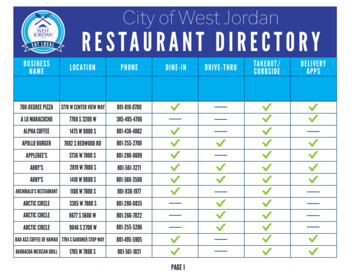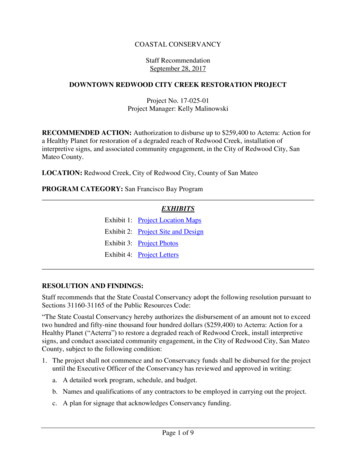
Transcription
COASTAL CONSERVANCYStaff RecommendationSeptember 28, 2017DOWNTOWN REDWOOD CITY CREEK RESTORATION PROJECTProject No. 17-025-01Project Manager: Kelly MalinowskiRECOMMENDED ACTION: Authorization to disburse up to 259,400 to Acterra: Action fora Healthy Planet for restoration of a degraded reach of Redwood Creek, installation ofinterpretive signs, and associated community engagement, in the City of Redwood City, SanMateo County.LOCATION: Redwood Creek, City of Redwood City, County of San MateoPROGRAM CATEGORY: San Francisco Bay ProgramEXHIBITSExhibit 1: Project Location MapsExhibit 2: Project Site and DesignExhibit 3: Project PhotosExhibit 4: Project LettersRESOLUTION AND FINDINGS:Staff recommends that the State Coastal Conservancy adopt the following resolution pursuant toSections 31160-31165 of the Public Resources Code:“The State Coastal Conservancy hereby authorizes the disbursement of an amount not to exceedtwo hundred and fifty-nine thousand four hundred dollars ( 259,400) to Acterra: Action for aHealthy Planet (“Acterra”) to restore a degraded reach of Redwood Creek, install interpretivesigns, and conduct associated community engagement, in the City of Redwood City, San MateoCounty, subject to the following condition:1. The project shall not commence and no Conservancy funds shall be disbursed for the projectuntil the Executive Officer of the Conservancy has reviewed and approved in writing:a. A detailed work program, schedule, and budget.b. Names and qualifications of any contractors to be employed in carrying out the project.c. A plan for signage that acknowledges Conservancy funding.Page 1 of 9
DOWNTOWN REDWOOD CITY CREEK RESTORATION PROJECTd. Documentation that all permits and approvals required for the project under federal, state,and local law have been obtained.e. Evidence that Acterra has entered into a written agreement with the City of RedwoodCity sufficient to enable Acterra to carry out and maintain the project.”Staff further recommends that the Conservancy adopt the following findings:“Based on the accompanying staff report and attached exhibits, the State Coastal Conservancyhereby finds that:1. The proposed authorization is consistent with Chapter 4.5 of Division 21 of the PublicResources Code, regarding the San Francisco Bay Area Conservancy Program.2. The proposed project is consistent with the current Conservancy Project Selection Criteriaand Guidelines.3. Acterra is a nonprofit organization existing under section 501(c)(3) of the U.S. InternalRevenue Code, and whose purposes are consistent with Division 21 of the Public ResourcesCode.”PROJECT SUMMARY:The proposed project would allow Acterra: Action for a Healthy Planet (Acterra), workingthrough its sponsored program Grassroots Ecology, to improve the ecological function andhealth of the riparian corridor of Redwood Creek in San Mateo County by removing andsuppressing invasive plants along both banks totaling 800 linear feet, removing 20-40 non-nativepalm trees, installing 2,000 locally-sourced native grasses, forbs, and shrubs and at least 40native trees, installing 15-20 native trees along the street near the creek to expand the ripariancorridor beyond the immediate creek bank, clearing trash from the riparian zone along both sidesof the creek, and installing interpretive signage as part of the project.The current condition of this stretch of Redwood Creek is one of neglect. The creek banks arelittered with trash and dominated by invasive plants, and unmaintained exotic palm trees at thetop of the bank have grown so dense that they obstruct views to the creek. There are alsohomeless encampments present at the site, amongst the palm trees at the top of the creek bank.This segment of Redwood Creek is the uppermost reach of the estuarine transition zone in theCreek and it experiences tidal flows. This segment is also important for connectivity between therestored marshland and upland terrestrial habitat, as well as for refugia for species such as theendangered salt marsh harvest mouse. The proposed project will improve water quality andwatershed health by removing trash and debris and improving soil conditions, which will treatstormwater, and by increasing native plant biodiversity, cover, habitat connectivity, and wildliferefugia within this ecologically important zone.The project will also enhance public green space by removing the dense palm trees to openviews, providing benefits to a planned Creekside trail that is affiliated with the adjacent housingproject, through its native plantings and educational signage. The educational signage is expectedto be coordinated with the adjacent affordable housing development, and will be located wherePage 2 of 9
DOWNTOWN REDWOOD CITY CREEK RESTORATION PROJECTbest viewed by the public. Lastly, the proposed project will expand urban forest through theplanting of approximately 60 native trees in the neighborhood, including 40 along the creekcorridor, which will increase tree canopy, mid-level understory plants, shade, and cover, therebyreducing the urban heat island effect and capturing stormwater.The proposed project will engage diverse sectors of the community in project implementation byholding 20 community workdays that involve an estimated 300 volunteers in creek restoration(including native plantings, invasive plant removal, and sheet mulching). Grassroots Ecologywill partner with a City of Redwood City urban forestry nonprofit, City Trees, to hold 2-3 streettree planting and maintenance events for the community, will hold 7 Conservation Corps workdays to involve and educate disadvantaged young adults, and will coordinate habitat restorationwith the adjacent affordable housing construction as it pertains to creek-side trail design andlandscaping. The City of Redwood City will also work with local homeless services provider,LifeMoves, to provide support services to the local homeless population and to help keep thecreek area clean.Acterra, based in Palo Alto, is a nonprofit organization with the mission to bring people togetherto create local solutions for a healthy planet. Acterra and its predecessor organizations,Peninsula Conservation Center and Bay Area Action, developed innovative programs forwetlands, watershed and habitat conservation, as well as programs centered on sustainable urbanliving. Acterra serves as the fiscal sponsor for Grassroots Ecology, which is the program that willbe implementing the project and carrying out the work. Acterra also provides fiscal sponsorshipto other organizations and initiatives within the Silicon Valley area, and has provided fiscalsponsorship in the past for the following Conservancy-funded projects: the San FrancisquitoCreek Watershed Steelhead Recovery Project, the Arastradero Preserve Restoration Project, andthe Bay Trail Enhancement Project.Grassroots Ecology (previously known as the Acterra Stewardship Program, prior to July 1,2016), has a mission to leverage the power of community volunteers to create healthyecosystems across Silicon Valley, from the foothills to San Francisco Bay. Grassroots Ecologyhas over two decades of experience with invasive plant management and native plant restorationin Silicon Valley watersheds. Grassroots Ecology engages 11,000 youth and adults annually toprotect and improve eight Silicon Valley watersheds in ten cities and two counties, Santa Claraand San Mateo. Working together with public and partner agencies, Grassroots Ecology restoresriparian habitats and natural lands, reduces, monitors, and prevents water pollution, enhanceswater conservation and stormwater capture, and preserves local biodiversity.Site Description: The project site is a 400-foot reach of Redwood Creek that flows throughdowntown Redwood City, extending from the outfall of the pump station at Bradford Street toVeterans Boulevard. The property is owned by the City. Just 0.75 miles downstream of theproject site, Redwood Creek meets a network of sloughs and the Bair Island Restoration Project,part of the Don Edwards San Francisco Bay National Wildlife Refuge. The project site is part ofthe tidal-terrestrial transition zone, important for connectivity between the restored marshlandand upland terrestrial habitat, which can provide refugia for endangered species, such as the saltmarsh harvest mouse. This particular segment of Redwood Creek is the uppermost reach oftransition zone habitat available in the watershed. It experiences tidal flows, with the lowbenches colonized by native tidal marsh zone vegetation including pickleweed, jaumea, and saltmarsh gumplant on the lower edges of the creek bank. Further up the riparian zone, native plantsPage 3 of 9
DOWNTOWN REDWOOD CITY CREEK RESTORATION PROJECTgive way to invasive fennel and other exotic herbaceous perennials and annual grasses. Dozensof unmaintained palm trees, as well as black acacia trees, have colonized the top of the bankarea, completely obscuring the creek from certain vantage points. Additionally, the creek banksare currently littered with trash and are occupied by several homeless individuals. In addition tothe 400-foot reach of Redwood Creek, the project site includes the surrounding neighborhoodwhere 15-20 street trees will be planted along the street near the creek to expand the ripariancorridor.Project History: The Conservancy has successfully worked with Acterra on similar restorationprojects in the past. On October 23, 2003, the Conservancy authorized 233,000 for the SanFrancisquito Creek Watershed Steelhead Recovery Project, which developed designs forimproved fish passage at barriers within the San Francisquito Watershed, removed exoticvegetation and revegetated targeted reaches, and developed stewardship materials for the entirewatershed. On December 13, 2007, the Conservancy approved 72,000 for the ArastraderoPreserve Restoration Project, which provided environmental restoration and stewardship at thePearson, Arastradero Preserve. On October 3, 2013, the Conservancy approved 35,000 for theBay Trail Enhancement Project to engage the south bay community to participate in coastalenhancement of a 1.3-mile stretch of the Bay Trail in East Palo Alto, San Mateo County.In addition to Conservancy work with the proposed grantee, the Conservancy has also investedin the region, and one of the Conservancy’s bigger projects in the San Francisco Bay, the BairIsland Restoration Project, is just downstream from Redwood Creek, adjacent to where RedwoodCreek spills out into the San Francisco Bay less than a mile from the proposed project area. Inaddition to nearby restoration work, the Conservancy also recently funded Sea Change SanMateo County, a sea level rise vulnerability assessment and adaptation planning effort thatcovered the shoreline of the planning area.PROJECT FINANCINGCoastal Conservancy 259,400City of Redwood City 30,000Project Total 345,200The expected source of funding for this authorization of 259,400 is the fiscal year 2016/17appropriation to the Conservancy from the “Water Quality, Supply, and InfrastructureImprovement Act of 2014” (Proposition 1, Division 26.7 of Water Code, § 79700 et seq.). Fundsappropriated to the Conservancy derive from Chapter 6 (commencing with Section 79730) andmay be used “for multi-benefit water quality, water supply, and watershed protection andrestoration projects for the watersheds of the state” (Section 79731). Section 79732(a) identifiesthe specific purposes of Chapter 6, of which the following pertain to this project: Protect andrestore aquatic, wetland, and migratory bird ecosystems, including fish and wildlife corridors(subsection (a)(4)); protect and restore rural and urban watershed health to improve watershedstorage capacity, forest health, protection of life and property, stormwater resource management,and greenhouse gas reduction (subsection (a)(9)); protect and restore coastal watersheds,including, but not limited to, bays, marine estuaries, and nearshore ecosystems (subsectionPage 4 of 9
DOWNTOWN REDWOOD CITY CREEK RESTORATION PROJECT(a)(10)); reduce pollution or contamination of rivers, lakes, streams, or coastal waters, andprotect or restore natural system functions that contribute to water supply, water quality, or floodmanagement (subsection (a)(11)); and assist in the recovery of endangered, threatened, ormigratory species by improving watershed health, instream flows, fish passage, coastal or inlandwetland restoration, or other means (subsection (a)(12)).As required by Proposition 1, the proposed project provides multiple benefits. By restoring adegraded reach of Redwood Creek, by planting native trees and riparian plants, expanding theurban tree canopy, and removing trash and invasive species, the proposed project will helprestore a tidal-terrestrial transition zone and refugia for species like the endangered salt marshharvest mouse; improve watershed storage capacity, forest health, and stormwater managementby expanding the urban forest and replacing invasive palm trees with a mix of native trees andplants; restore coastal watersheds by replacing invasive trees with native trees and plants along acreek corridor that is tidally connected to the San Francisco Bay estuary; reduce pollution inRedwood Creek by removing trash and debris, and promoting the filtration of stormwater runoffthrough improving soil conditions though the addition of organic sheet mulching; and assist inthe recovery of endangered, threatened, or migratory species by improving watershed health andproviding refugia for endangered species such as the salt marsh harvest mouse.The proposed project was selected through the seventh-round competitive grant process underthe Conservancy’s Proposition 1 Grant Program Guidelines adopted in June 2015 (see §79706(a)), focused on Bay Area Urban Greening. The proposed project meets each of theevaluation criteria in the Proposition 1 Guidelines as described in further detail in this “ProjectFinancing” section, the “Project Summary” section, and in the “Consistency with Conservancy’sProject Selection Criteria & Guidelines” section of this report. 30,000 in cost share funds forthis project proposal come from the City of Redwood City.The remaining cost share funds are not displayed in the table, as they are contributed by theprospective grantee partner (Grassroots Ecology), and project partners, via in-kind contributions.Grassroots Ecology will be contributing 17,100 in in-kind services, and project volunteers andpartners, such as City Trees and the City of Redwood City, will be contributing an additional 38,700 in in-kind services.CONSISTENCY WITH CONSERVANCY’S ENABLING LEGISLATION:This project is undertaken pursuant to Chapter 4.5 of the Conservancy’s enabling legislation,Public Resource Code Sections 31160-31165, to address resource goals in the San Francisco BayArea. Section 31162 of the Public Resources Code authorizes the Conservancy to undertakeprojects and award grants in the nine-county San Francisco Bay Area, including San MateoCounty. All of the proposed project area is within San Mateo County. Under Section 31162(b),the Conservancy may act to protect, restore, and enhance natural habitats, connecting corridors,and watersheds and other open space resources of regional significance. The proposed projectwill restore a degraded reach of Redwood Creek that flows through downtown Redwood City inan ecologically rich, tidal-terrestrial transition zone that connects to the San Francisco Bayestuary.The proposed project is appropriate for prioritization under the selection criteria set forth inSection 31163(c) in that it: (1) is consistent with the San Francisco Bay Subtidal Habitat GoalsPage 5 of 9
DOWNTOWN REDWOOD CITY CREEK RESTORATION PROJECTreport, the Baylands Ecosystem Habitat Goals Science Update 2015, and the San Francisco BayPlan (2008)(“Bay Plan”), as described below; (2) involves the coordination of the jurisdictionwith community and nonprofit groups to improve the health of the creek and benefit the region;(3) will be implemented in a timely manner; (4) provides opportunities to coordinate therestoration with the development of adjacent low-income housing and a future trail to be builtalong the creek by the developers; and (5) includes outside grant funds from other sources offunding or assistance.CONSISTENCY WITH CONSERVANCY’S 2013 STRATEGIC PLANGOAL(S) & OBJECTIVE(S), AS REVISED JUNE 25, 2015:Consistent with Goal 7, Objective G of the Conservancy’s 2013-2018 Strategic Plan, theproposed project will implement tree and vegetation plantings that reduce urban heat islands andprovide other benefits such as reduced energy use and enhanced stormwater management.Consistent with Goal 11, Objective D of the Conservancy’s 2013-2018 Strategic Plan, theproposed project will enhance upland habitat in a tidal-terrestrial transition zone at the upperreach of Redwood Creek, which is tidally connected to the San Francisco Bay estuary.Consistent with Goal 11, Objective F of the Conservancy’s 2013-2018 Strategic Plan, theproposed project will enhance a riparian habitat and functions for the benefit of wildlife andwater quality, by removing invasive plants and trees and replacing them with natives, as well asremoving trash and debris.Consistent with Goal 12, Objective B of the Conservancy’s 2013-2018 Strategic Plan, theproposed project will implement the installation of interpretive signage along Redwood Creek,which will educate the public about the restoration project.CONSISTENCY WITH CONSERVANCY’SPROJECT SELECTION CRITERIA & GUIDELINES:The proposed project is consistent with the Conservancy’s Project Selection Criteria andGuidelines, last updated on October 2, 2014, in the following respects:Required Criteria1. Promotion of the Conservancy’s statutory programs and purposes: See the “Consistencywith Conservancy’s Enabling Legislation” section above.2. Consistency with purposes of the funding source: See the “Project Financing” sectionabove.3. Promotion and implementation of state plans and policies:a. The proposed project fits within one of the five key areas that guide the goals of theCalifornia @ 50 Million: The Environmental Goals and Policy Report, to stewardand protect natural landscapes, by restoring and enhancing the upper reach ofRedwood Creek, replacing invasive plants and trees with natives, and removing trashand debris from the creek banks.b.The proposed project will help implement a Biodiversity and Habitat goal of the CAClimate Adaptation Strategy/Safeguarding California: Reducing Climate Risk Plan,Page 6 of 9
DOWNTOWN REDWOOD CITY CREEK RESTORATION PROJECTto “support environmental stewardship across sectors by promoting nature-basedsolutions for adapting to climate risks,” by planting native trees and plants that willhelp to mitigate the urban heat island effect that will be exacerbated with climatechange impacts. Lastly, the proposed project will help implement an Ocean andCoastal Ecosystems and Resources goal, to “study and support investment in costeffective green infrastructure to reduce flood risk, storm water runoff, and tomaximize associated co-benefits” by planting native trees and plants that will help tofacilitate storm water filtration, by also providing co-benefits for wildlife.c. The proposed project will help implement the California Wildlife Action Plan,specifically goal 2.1 to “maintain and improve connectivity vital for sustainingecosystems (including those relevant to vegetation, wildlife corridors, and geneticpermeability), by restoring the upper reach of Redwood Creek, which serves as a keypiece of the tidal-terrestrial transition zone that connects downstream to the SanFrancisco Bay estuary.4. Support of the public: The proposed project has received broad public support, includingsupport from the City of Redwood City and City Trees.5. Location: The proposed project is located along the upper reach of Redwood Creek,specifically between Veterans Blvd, Walnut St, Bradford St, and Jefferson Avenue, in theCity of Redwood City, in San Mateo County.6. Need: Though the grantee does offer matching funds, they are not adequate to complete theproject without Conservancy support. Thus, if the proposed project is not funded by theConservancy, the project will be deferred without funding until another granting source canbe identified. Thus, without Conservancy participation in the project, the project would notbe able to move forward with implementation at this time.7. Greater-than-local interest: The proposed project site is the uppermost reach of RedwoodCreek, which connects directly to the San Francisco Bay estuary after winding throughdowntown Redwood City. By restoring riparian habitat through removing invasive plants andtrees and planting native plants and trees, as well as removing trash and other debris from thecreek banks, the proposed project directly enhances adjacent investments in bay wetlands andimproves the water quality of the San Francisco Bay estuary, which is shared by all ninecounties surrounding the San Francisco Bay and is an important regional, as well asstatewide, resource.8. Sea level rise vulnerability: The proposed project, based on a creek, is subject to floodingand would be affected by a sea level rise of 24 inches or higher, according to sea level risevulnerability maps developed by Sea Change San Mateo County, an effort previously fundedby the Conservancy. It is estimated that the area will be routinely flooded sometime between2050 and 2100. To minimize vulnerability to sea level rise and flooding, project proponentswill focus native tree and shrub plantings on upland and top of bank areas. The proposedproject site will be restored with native plants which are tolerant of brackish waterconditions, and will be able to naturally shift as sea levels rise over time.Additional CriteriaPage 7 of 9
DOWNTOWN REDWOOD CITY CREEK RESTORATION PROJECT9. Urgency: There is current political will and support for the project. In addition, it is anopportune time to implement the proposed project as there is an affordable housing project,directly adjacent to the site, that is slated to begin soon and which creates a window ofopportunity to work with the developer to ensure that the housing project is complementaryto habitat restoration.10. Resolution of more than one issue: The proposed project replaces invasive plants and treeswith native plants and trees, thus restoring the riparian habitat, but also facilitates improvedwater quality through stormwater filtration, provides refugia in the upper reach of RedwoodCreek, and by removing dense palm trees that currently dominate the site, creates open spacefor views down to the Creek as well as open space that can be enhanced with public accessfeatures in the future.11. Leverage: See the “Project Financing” section above.12. Readiness: Planning work for the proposed project is slated to begin upon Conservancyapproval and the project is anticipated to be completed by December 2020. Projectproponents are ready to begin work on the project once funding is authorized.13. Realization of prior Conservancy goals: See “Project History” above14. Return to Conservancy: See the “Project Financing” section above.15. Cooperation: The proposed project involves cooperation between a nonprofit organization,Acterra, via its sponsored program Grassroots Ecology, and the City of Redwood City, toaccomplish shared goals. The proposed project will also entail cooperation between theGrassroots Ecology, and the urban forestry nonprofit, City Trees, as well as withConservation Corps, community members for volunteer work days, and the adjacentaffordable housing development project.16. Vulnerability from climate change impacts other than sea level rise: There is a potentialfor drought to affect the project, thus, native plantings will be conducted in the fall andwinter months to allow for root establishment during the rainy season, and then plants will beirrigated during the summer over the first 2-3 years using recycled and reclaimed water.Once established, the plantings are expected to be resilient to climate shifts.17. Minimization of greenhouse gas emissions: The proposed project anticipates a netreduction in greenhouse gas emissions given the carbon sequestration benefit that will occurthrough the installation of native trees and plants. The addition of up to 60 trees to the urbanlandscape will also reduce the urban heat island effect and the need for cooling, thus reducingpeak energy demand. In addition, the restoration and urban forestry activities are primarilypeople-powered, and though tree removal contractors may utilize power tools, volunteerparticipants involved in the proposed restoration work will be provided with hand tools andshovels to plant and clear weeds. Vehicle miles traveled will be minimal, since volunteersand contractors will be recruited from the local community.Page 8 of 9
DOWNTOWN REDWOOD CITY CREEK RESTORATION PROJECTCONSISTENCY WITH SAN FRANCISCO BAY PLAN:The proposed project is consistent with the San Francisco Bay Plan’s Fish, Other AquaticOrganisms and Wildlife Policy #2, since the proposed project helps to restore and conserve ahabitat with native plant species, that will provide refuge to an endangered species.The proposed project is consistent with the San Francisco Bay Plan’s Water Quality Policy #1,since the proposed project restores upland tidal-terrestrial transition zone habitat with nativeplants and trees, helping to prevent Bay water pollution.The proposed project is consistent with the San Francisco Bay Plan’s Climate Change Policy #3,since the proposed project takes into consideration two feet of sea level rise in projectimplementation, thus protecting ecosystem services, and designing the project to be resilient tomid-century sea level rise projections.The proposed project is consistent with the San Francisco Bay Plan’s Recreation Finding v. sincethe proposed project provides interpretation of a wildlife area, through installing signageadjacent to the project area, the creek banks of Redwood Creek in downtown Redwood City.The proposed project is consistent with the San Francisco Bay Plan’s Recreation Policy since itensures there is interpretation of the creekside habitat, which may eventually have public access.COMPLIANCE WITH CEQA:The proposed project is categorically exempt from the California Environmental Quality Act(CEQA) pursuant to 14 Cal. Code of Regulations Section 15333 Small Habitat RestorationProjects, which exempts habitat restoration projects that: (a) do not exceed five acres in size, (b)do not create a significant adverse impact on endangered, rare or threatened species or theirhabitat pursuant to section 15065, (c) are not located where there are hazardous materials thatmay be disturbed or removed, and (d) will not result in impacts that are significant when viewedin connection with the effects of past projects, the effects of other current projects, and theeffects of probable future projects. The proposed riparian restoration project does not exceedfive acres in size and promotes the restoration and enhancement of riparian habitat adjacent to acreek, which will benefit both native plants as well as wildlife along the creek corridor whichconnects to the San Francisco Bay estuary. The proposed project meets each of the criteria ofSection 15333. Accordingly, the proposed project is exempt from CEQA.Upon Conservancy approval, staff will file a Notice of Exemption.Page 9 of 9
landscaping. The City of Redwood City will also work with local homeless services provider, LifeMoves, to provide support services to the local homeless population and to help keep the creek area clean. Acterra, based in Palo Alto, is a nonprofit organization with the mission to bring people together to create local solutions for a healthy planet.
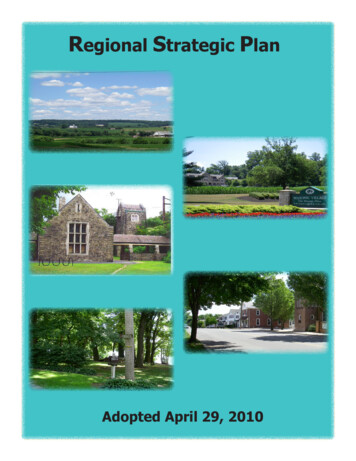
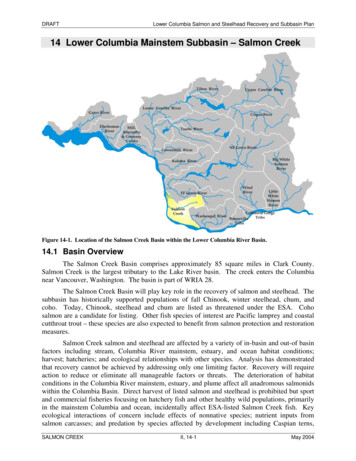

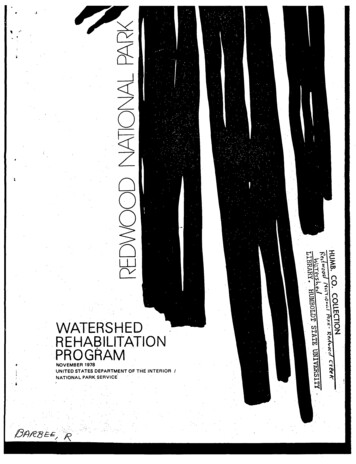
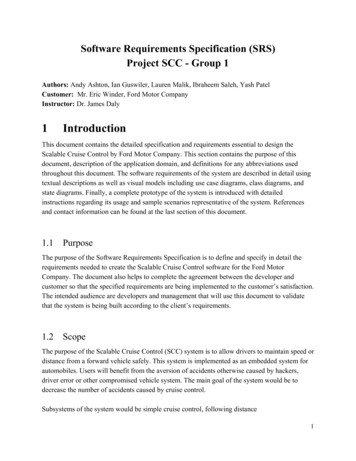
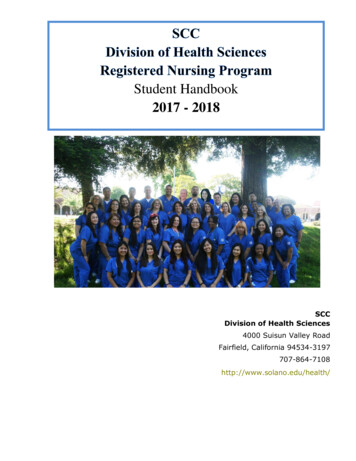
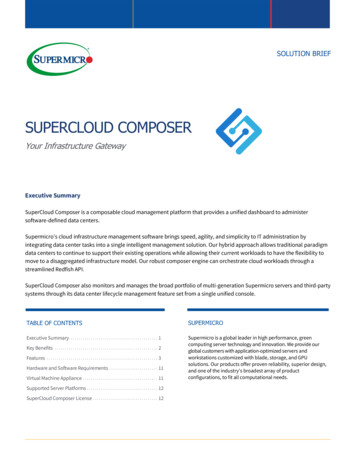
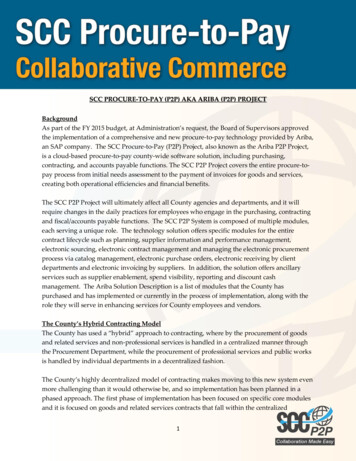
![[1] - nonoise](/img/32/redwood-20city-20california.jpg)
